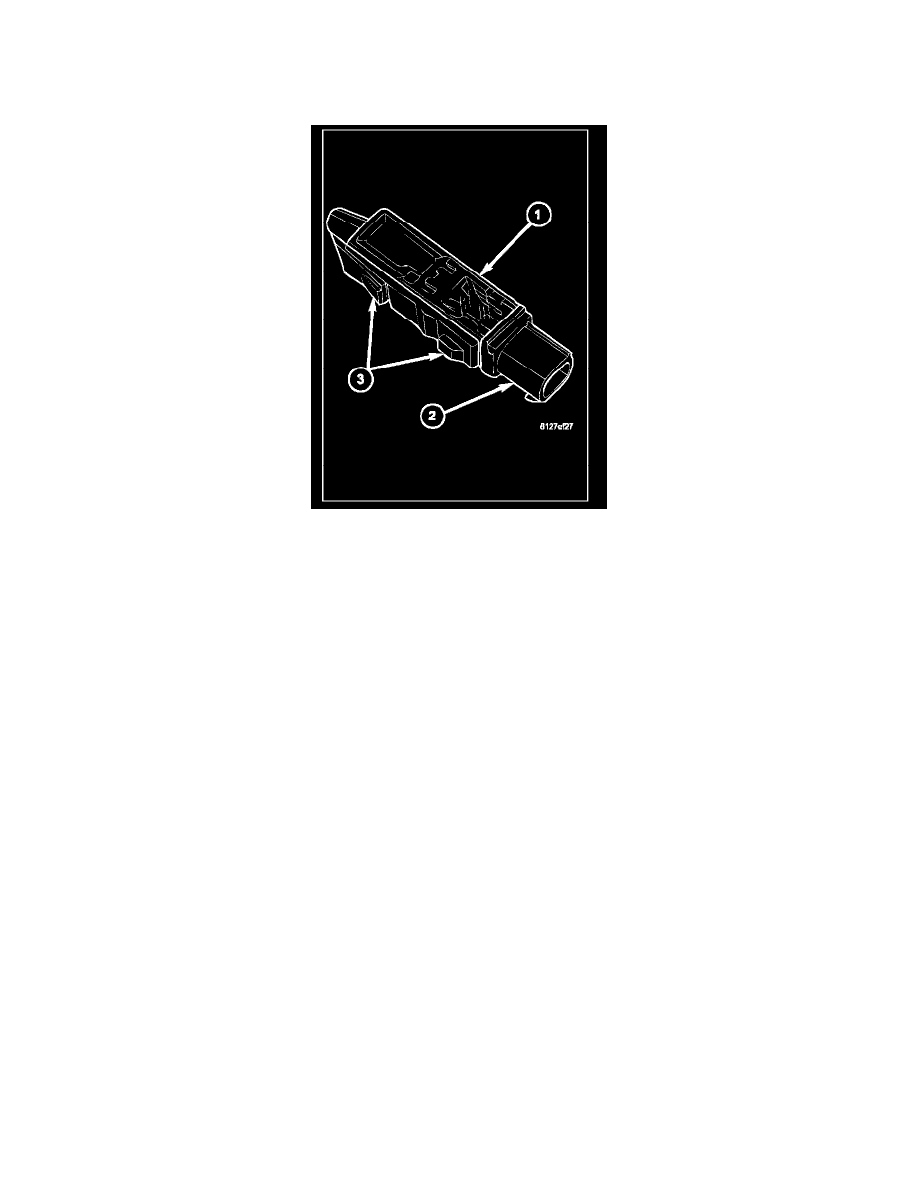Raider 2WD V6-3.7L (2008)

Seat Position Sensor: Description and Operation
SENSOR - SEAT TRACK POSITION
DESCRIPTION
The seat track position sensor (1) is a Hall Effect-type sensor. This sensor consists of a Hall Effect Integrated Circuit (IC) chip encased in potting
material within a cavity of the molded plastic sensor housing.
The sensor housing has two integral snap features (3) and snaps into a stamped metal bracket located on the inboard side of one of the seat adjuster
tracks on the front seat of vehicles so equipped. A molded connector receptacle (2) integral to the sensor housing is connected to the vehicle electrical
system through a connector and take out of the seat wire harness beneath the front seat cushion frame.
The seat track position sensor cannot be adjusted or repaired and, if ineffective or damaged, the entire sensor must be replaced.
OPERATION
The seat track position sensor is designed to provide a seat position data input to the Occupant Restraint Controller (ORC) indicating whether the driver
side front seat is in a full forward or a not full forward position. The ORC uses this data as an additional logic input for use in determining the
appropriate deployment force to be used when deploying the multistage driver side front airbag.
The seat track position sensor receives a nominal five volt supply from the ORC. The sensor communicates the seat position by modulating the voltage
returned to the ORC on a sensor data circuit. The ORC also monitors the condition of the sensor circuits and will store a Diagnostic Trouble Code
(DTC) for any fault that is detected. The ORC then sends messages over the Controller Area Network (CAN) data bus to control the illumination of the
airbag indicator in the ElectroMechanical Instrument Cluster (EMIC) (also known as the Cab Compartment Node/ CCN).
The hard wired circuits between the seat track position sensor and the ORC may be diagnosed using conventional diagnostic tools and procedures. Refer
to the appropriate wiring information. However, conventional diagnostic methods will not prove conclusive in the diagnosis of the seat track position
sensor or the electronic controls and communication between other modules and devices that provide features of the Supplemental Restraint System
(SRS). The most reliable, efficient, and accurate means to diagnose the seat track position sensor or the electronic controls and communication related to
seat track position sensor operation requires the use of a diagnostic scan tool. Refer to the appropriate diagnostic information.
